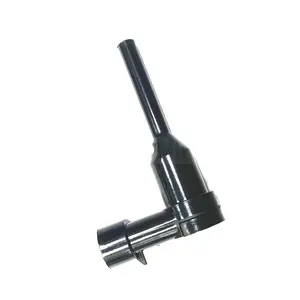

Ould chìm bể nước cảm biến mức chất lỏng đo độ sâu chỉ số kỹ thuật số dò cảm biến dò mức transmitter
















Chúng tôi cung cấp cảm biến mức chất làm mát astra giá sỉ hàng đầu được thiết kế để giữ cho mọi chiếc xe luôn sạch sẽ và trông đẹp mắt. Chúng tôi có nhiều keyword thảm xe hơi. Ba keyword phổ biến nhất là thảm lót sàn ô tô, lót cốp ô tô, lót cốp ô tô. Chúng bảo vệ bề mặt khỏi muối đường hoặc bụi bẩn, giúp làm sạch mọi chất thải đổ tràn hoặc rác thải dễ dàng hơn và giúp bảo vệ vải bọc. Thảm ô tô có sẵn của chúng tôi có khả năng chống lại bụi bẩn, ma sát, nước và một loạt các yếu tố bên ngoài, giúp chúng trở thành lựa chọn lý tưởng để bảo vệ sàn ô tô. Thảm và thảm ô tô không chỉ đơn thuần là một chỗ dựa để đặt bên dưới xe. Chúng bảo vệ sàn trải thảm của xe bằng cách hấp thụ một số mảnh vụn và hơi ẩm có thể làm ố hoặc phá hủy thảm của xe.
Thảm trải sàn giúp bảo vệ tối đa nội thất của xe nhưng có thể bị ố và hao mòn khi sử dụng, khiến chúng không được mong muốn hơn so với các lựa chọn khác. Hầu hết các keyword thảm thời tiết được làm với lớp đệm cao su giúp giữ ẩm không thấm vào thảm và làm mất màu hoặc hư hỏng chúng. Bạn cũng có thể tìm thấy các keyword cảm biến mức chất làm mát astra khác bao gồm thảm ô tô cao su, thảm lót sàn bảo vệ thời tiết, thảm ô tô kim cương, thảm ô tô đặt làm, thảm lót sàn cho xe tải, thảm lót giấy, thảm lót sàn nhà để xe ô tô, lót sàn ô tô, thảm lót sàn ô tô, thảm ô tô sang trọng, bọc táp lô ô tô. Chúng dễ dàng hút bụi, lau chùi và bảo dưỡng nên sẽ trông như mới trong thời gian dài.